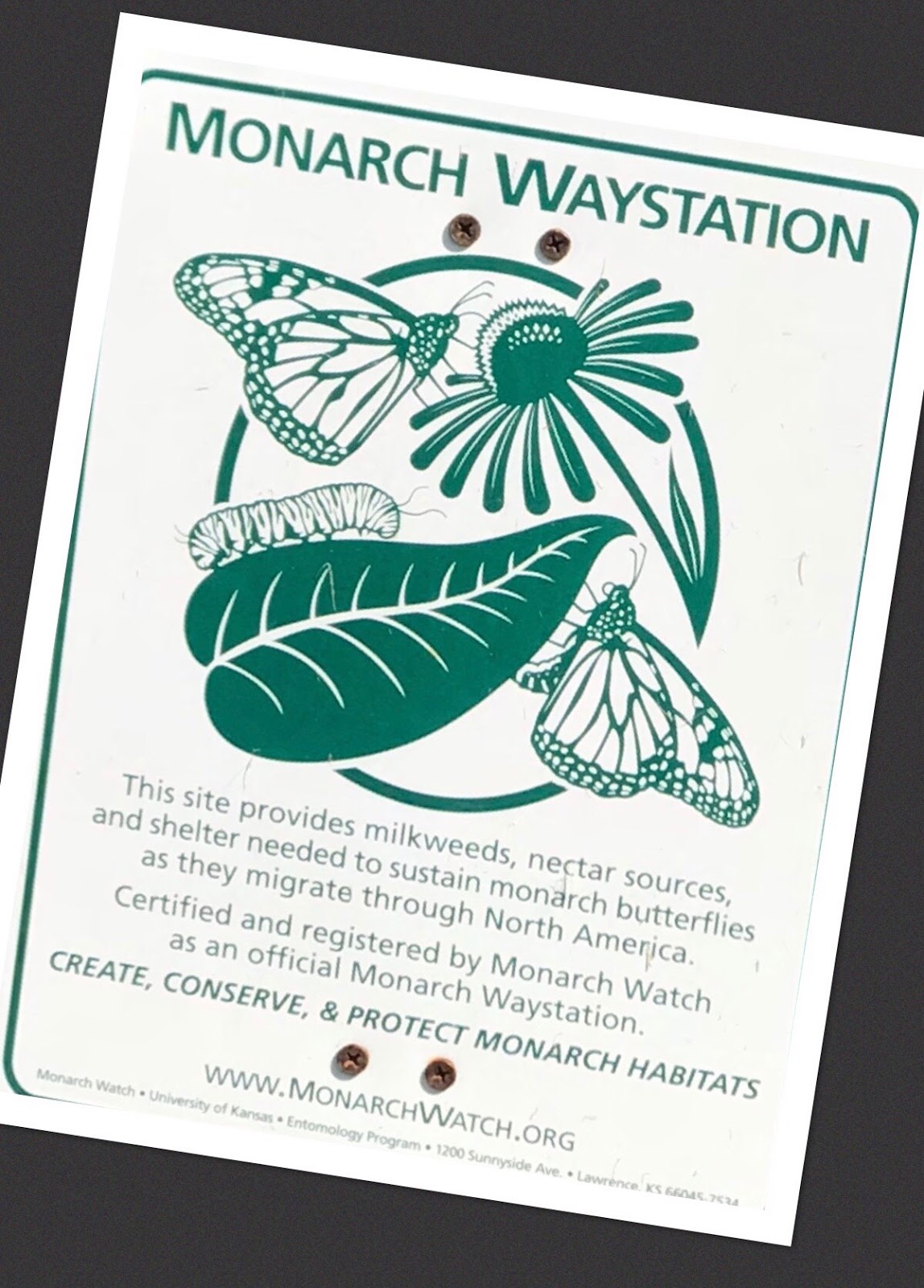Written by Leadership Academy intern, Lucille Filyaw
Monarch butterflies (Danaus plexippus) are one of the most recognizable and remarkable butterfly species in North America. With their bright orange wings, monarchs are wide-ranging powerful fliers. When fall comes around monarchs, begin to use this ability. They migrate thousands of miles to their winter home. Monarchs are one of a few known butterflies to make a two-way migration as bird do. Except, monarchs populations are dropping. Monarchs have rebounded from population losses of 90 percent in the past, but they may not be able to recover from the population levels to which people and environmental factors are now pushing. So let’s do something about it!

Monarch Migration:
As fall begins, Monarchs initiate their 3,000-mile migration to southwestern Mexico. Sadly, these breathtaking butterflies are in danger of extinction. Since 1990, Monarch populations have plummeted with nearly 1 billion butterflies dying. Washington Post even called it “nothing short of a massacre.”
Monarchs have to deal with climate change, and the impacts of humans – our degradation of the environment. They are struggling to survive and breed throughout the entire migration route throughout North America (Canada, USA, Mexico).
Stages & Threats:
Monarchs have critical migratory stages to ensure they survive. In winter migration seasons, the butterflies need insulated cover. Monarchs find this protection in dense Mexican Forests, in particular, the Oyamel Fir Forests. While most northern winter forests are white, the Oyamel Fir Forest turns orange, as monarch butterflies cover every branch and trunk in sight. Now you may ask why this forest. The Oyamel Fir Forest is exceptionally humid; this humidity assures the Monarchs will not dry out, allowing them to conserve their energy. Considering the importance of this forest to the monarch population the Mexican government has taken steps to protect it, but even with government regulations, illegal loggers are destroying its edges. The problems do not occur with commercial loggers; rather it is the locals who are continuing to damage the forest for building materials.
 During the spring and summer migration, monarchs need milkweed (Asclepias), milkweed is the primary host plant for monarch caterpillars, and they indeed cannot survive without it. Monarch caterpillars will only eat and lay their eggs on this flowering plant. The reason is the milkweed contain cardenolides- a steroid found in many plants that is toxic- this chemical is toxic to most of their predators. Monarchs have developed a tolerance to this steroid through evolution. As a defense mechanism to protect offspring, they lay their eggs on milkweed, and when the caterpillars’ hatch they render themselves unappetizing to predators by feasting on the chemicals.
During the spring and summer migration, monarchs need milkweed (Asclepias), milkweed is the primary host plant for monarch caterpillars, and they indeed cannot survive without it. Monarch caterpillars will only eat and lay their eggs on this flowering plant. The reason is the milkweed contain cardenolides- a steroid found in many plants that is toxic- this chemical is toxic to most of their predators. Monarchs have developed a tolerance to this steroid through evolution. As a defense mechanism to protect offspring, they lay their eggs on milkweed, and when the caterpillars’ hatch they render themselves unappetizing to predators by feasting on the chemicals.
Dr. Bret Elderd, Louisiana State University Department of Biological Sciences professor, completed a study on how climate change impacts the relationships between individual species. His results revealed that climate change impact milkweed surreally. As temperatures increase, so does the level of cardenolides in a tropical variety of milkweed (Asclepias curassavica). When this steroid increases, it poisons the monarch larvae, delaying lavas growth and stunting adult forewings. Introducing this variety of milkweed in more locations will make monarch poisonings more common. Even as more milkweed is being introduced, it still uncommon in residential areas’, since milkweed is considered an invasive weed. So, when we see milkweed, we get rid of it.
There are some ways that you can help:
- Plant milkweed in your yard or garden. There are so many milkweed species, so no matter where you live there’s at least one species native to your area. In Maryland, the native species are butterfly weed (Asclepias Tuberosa), Swamp Milkweed (Asclepias Incarnata), and common milkweed (Asclepias Syriaca). You can find milkweed at your local Home Depot nursery section.
- Do not use pesticides- Monarch are insects, and spraying insecticides kill them. Avoid spraying pesticides in your yard.
- Create Monarch Habitats- With Maryland Monarch Conservation you can learn about creating a monarch garden, they show the different types of plants Monarchs feed off of (most in public parks will have a sign).
- At the University of Maryland, they began a Tag and Release program, where you can raise larva, tag, and release them. They are using this program to research and document Monarch behaviors. The more we know about them, the better we can help them. Their next demonstration is Wednesday, Oct 3 – 10:00 am to 10:45 am. If you are looking to get involved, go to http://extension.umd.edu and look up the tag and release program
Citations:
- Mechanisms Behind The Monarch’s Decline, Science, June 22, 2018. Retrieved from http://science.sciencemag.org
- The Four Biggest hazards facing monarch butterflies,Nature. Retrieved from http://www.nature.org
- In The Face of declines in monarch number and habitat availability, MJV News RSS, September 13, 2018. Retrieved from monarchjointventure.org
- Climate Change And Invasive Milkweed Could make toxic cocktail for monarchs, study finds, Eco Watch, Olivia Rosane April 4, 2018. September 13, 2018. Retrieved from http://Ecowatch.google.com
- It’s An Ecological Trap, LSU Division of strategic communications, Bret Elderd. May 3, 2018. September 15, 2018. Retrieved from www.lsu.ed
- David Mizejewski, D.M. February 10,2015 Six Ways Save Monarchs, National WIldlife Federation’s Blog. Retrieved from blog.nwf.org
- The monarch massacre: Nearly a billion butterflies have vanished. (2015, February 09). Retrieved from https://www.washingtonpost.com/news/energy-environment/wp/2015/02/09/the-monarch-massacre-nearly-a-billion-butterflies-have-vanished/?utm_term=.fb96fdf3f674





